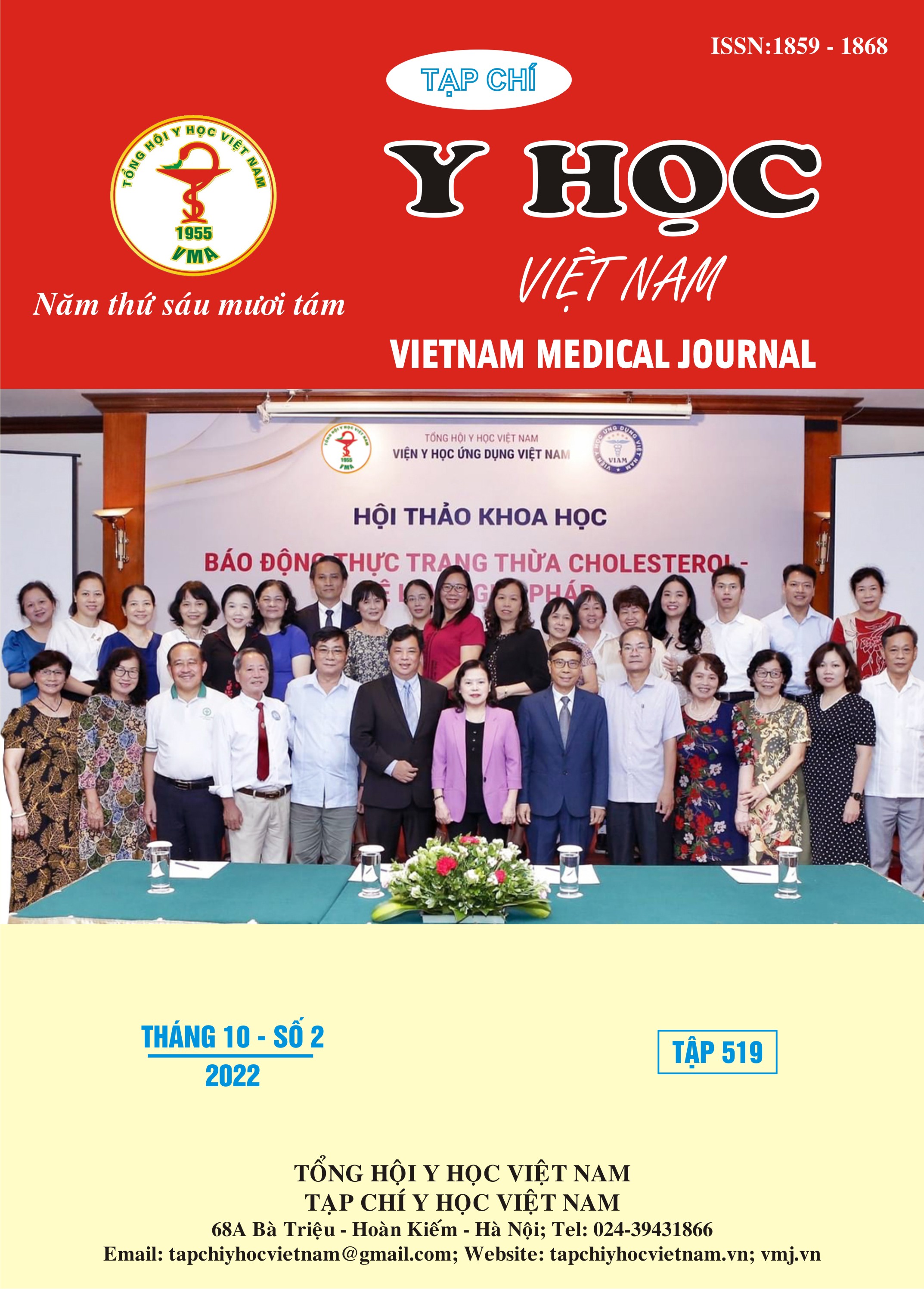CLINICAL, SUBCLINICAL FEATURES AND SOME CAUSES OF INTERSTITAL LUNG DISEASE
Main Article Content
Abstract
Objectives: To assess clinical and subclinical characteristics and some causes of interstitial lung disease. Subjects and methods: 102 interstitial lung disease patients. Patients were scanned by high–resolution computed tomography to identify interstitial lung disease according to ATS/ERS/ALAT 2011 criteria. Research results: Shortness of breath (88,2%) was the main functional symptom. 82,4% had crackles and 29,4% muscle weakness on clinical examination. Anemia on laboratory tests had found in 41,5%. The average erythrocyte sedimentation rate in the first and second hours was 44,11 ± 30.5mm and 68.16 ± 29.15mm, respectively. The mean CRP concentration of the study group was 5.5 ± 7,71 mg/dl, and the Ferritin (ng/ml) concentration of the study group was 1261.04 ± 1623,7. Pulmonary hypertension had found in 73,7% of patients, mainly mild pulmonary hypertension (53,4%). The mean pulmonary artery pressure was 39,9 ± 17,14 mmHg. Restrictive ventilation disorder had found in 71,2%. The most common lesion on HRCT is a ground glass pattern (59.8%), followed by traction bronchiectasis (50%), interstitial pattern (45.1%), honeycombing (31,4%), reticular pattern (23.5%), and other lesions with less rate. The most common cause of interstitial lung damage is the group of connective tissue diseases, mainly polymyositis/dermatomyositis, accounting for 26,3%. In the idiopathic group, idiopathic pulmonary fibrosis was the leading cause accounting for 4.9%; less commonly, AIP and COP only accounted for 1% of each reason. The remaining Sarcoidosis (3.9%), Alveolar proteinosis (3.9%), HP (2%), Eosinophilic pneumonia, LAM, Occupational lung disease, and Erasmus syndrome account for only 1% of patients every cause. Conclusion: Interstitial lung disease is a complex disease with many etiologies. High-resolution computed tomography is an essential method in diagnosing interstitial lung disease while performing a clinical examination and selecting appropriate tests to accurately determine the etiology of interstitial lung disease to choose the proper treatment.
Article Details
Keywords
ILD, interstitial lung disease, HRCT, high resolution computed tomography
References
2. Karakatsani A, Papakosta D, Rapti A, et al. Epidemiology of interstitial lung diseases in Greece. Respir Med. 2009;103(8):1122-1129. doi:10.1016/ j.rmed.2009.03.001
3. Tatjana Peroš-Golubičić, Sharma OP, Springerlink (Online Service. Clinical Atlas of Interstitial Lung Disease. Springer London; 2006.
4. Kim HJ, Kiel S, Wang Q, Tomic R, Perlman D, Thenappan T. Outcomes of Treatment of Pulmonary Arterial Hypertension in Patients with Intersitial Lung Disease. In: C42. SEARCHIN’ FOR A CURE: NEW ILD TREATMENTS. American Thoracic Society International Conference Abstracts. American Thoracic Society; 2015:A4404-A4404.doi:10.1164/ajrccm-conference.2015.191.1_MeetingAbstracts .A4404
5. Madden BP, Allenby M, Loke TK, Sheth A. A potential role for sildenafil in the management of pulmonary hypertension in patients with parenchymal lung disease. Vascul Pharmacol. 2006;44(5):372-376. doi:10.1016/j.vph.2006.01.013
6. Raghu G, Collard HR, Egan JJ, et al. An official ATS/ERS/JRS/ALAT statement: idiopathic pulmonary fibrosis: evidence-based guidelines for diagnosis and management. Am J Respir Crit Care Med. 2011; 183(6):788-824. doi:10.1164/ rccm. 2009-040GL
7. Tanaka T, Ishida K. Update on Rare Idiopathic Interstitial Pneumonias and Rare Histologic Patterns. Arch Pathol Lab Med. 2018;142(9):1069-1079. doi:10.5858/arpa.2017-0534-RA
8. Tateishi T, Johkoh T, Sakai F, et al. High-resolution CT features distinguishing usual interstitial pneumonia pattern in chronic hypersensitivity pneumonitis from those with idiopathic pulmonary fibrosis. Jpn J Radiol. 2020; 38(6):524-532. doi:10.1007/s11604-020-00932-6


